#north view of blenheim
Text
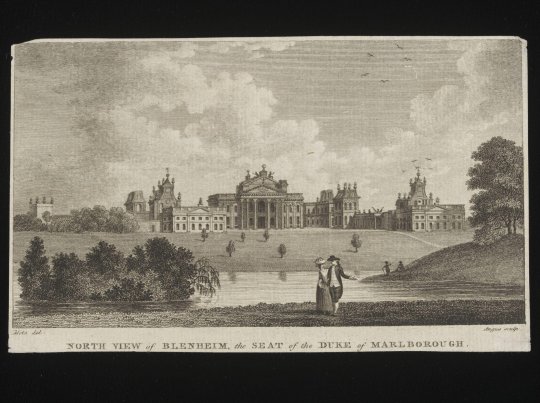
North View of Blenheim, 1800-20
From the Victoria and Albert Museum
#blenheim#north view of blenheim#print#art#engraving#landscape#Blenheim palace#1800#1820#1800s#1820s#1810s#19th century#regency#georgian#architecture
9 notes
·
View notes
Text

Royal Air Force Tactics During the Battle of Britain | Classic Warbirds
During the years preceding the Second World War (1939 - 1945), the prevalent idea that affected military thinking was, as Stanley Baldwin, leader of the Conservatives, stated in a speech in the House of Commons on the 10th November 1932 that “the bomber will always get through”, as it was envisioned that in a future war the enemy would deliver a knockout blow from the air. Limiting the damage enemy aircraft could do would be the responsibility of the Air Defence of Great Britain, which was established on the 1st January 1925, and was the component of the Royal Air Force tasked with defending the UK's airspace.
As the RAF expanded during the 1930s, on the 13th July 1936 the Air Defence of Great Britain was disbanded and replaced on the 14th July 1936 by three new commands, Bomber, Coastal and Fighter alongside Training Command, formed on the 1st May 1936. Fighter Command, with Air Chief Marshal Hugh Dowding as its Commander-in-Chief, was now responsible for the defence of the UK's airspace.
The tactics developed by Fighter Command, as part of its Air Fighting Manual, called for tight formations of three aircraft in a Vic formation to perform Fighter Area Attacks, of which there were six different scenarios to attack enemy aircraft, depending on the amount and type of aircraft intercepted. Once they spotted the hostile aircraft the squadron would position themselves according to the Fighter Area Attack chosen. However, this was based on the premise that attacking bombers would fly from airfields in Germany without effective fighter cover, which wouldn't be the case in the summer of 1940, as the Luftwaffe could operate from airfields in France.
Fighter Command Structure
When the battle began on the 10th July 1940, Fighter Command, whose headquarters were at Bentley Priory, was still commanded by Air Chief Marshal Hugh Dowding and was structured as follows:
No. 10 Group
Commanded by Air Vice-Marshal Sir C J Quintin Brand
Headquarters: RAF Box
Covering: South West England and South West Wales No. 11 Group
Commanded by Air Vice-Marshal Keith Park
Headquarters: RAF Uxbridge
Covering: South East England and London
No. 12 Group
Commanded by Air Vice-Marshal Trafford Leigh-Mallory
Headquarters: RAF Watnall
Covering: East Anglia, Midlands, Mid and North Wales No. 13 Group
Commanded by Air Vice-Marshal Richard Saul
Headquarters: RAF Newcastle
Covering: North England and Scotland
No. 14 Group
Commanded by Group Captain Philip F. Fullard (1)
Headquarters: Drumossie Hotel, Inverness
Covering: Scotland No. 9 Group (2)
Commanded by Air Vice-Marshal Wilfred McClaughry
Headquarters: RAF Barton Hall
Covering: Northern Ireland and North West England
1. Replaced by Air Vice-Marshal Malcolm Henderson on the 20th July 1940.
2. Formed on the 16th September 1940.
Aircraft Strength - 10th July 1940
Fighter Command had 656 fighters available, consisting of 29 Hawker Hurricane, 19 Supermarine Spitfire, 6 Bristol Blenheim and 2 Boulton Paul Defiant squadrons. It could also call on Nos. 804 and 808 Naval Air Squadrons, the former equipped with Gloster Sea Gladiators and the latter Fairey Fulmars, who were on loan from the Fleet Air Arm.
View the order of battle for Fighter Command on the 10th July 1940
The Luftwaffe could call on over 2,000 aircraft to begin their campaign to gain air supremacy over Southern England, one of the requirements for Operation Sealion the invasion of Britain to take place. Mainly comprising Messerschmitt Bf 109 and Bf 110 fighters, Heinkel He 111, Dornier Do 17 and Junkers Ju 88 twin-engined bombers and Junkers Ju 87 dive bombers.
Squadron Structure, Vic and Finger-Four Formation
During the battle, a typical Royal Air Force fighter squadron was to have twelve aircraft and pilots available for operations. The ideal number for the squadron was at least sixteen aircraft to cover those being serviced or out of action. To cover pilots who were on leave or unable to fly it was intended for the squadron to have at least 20 pilots to call upon, although at times some squadrons were unable to meet this number.
The squadron would be split into four sections (red, yellow, blue and green) with three pilots (one, two and three), with two sections making up one flight of aircraft. Each section, flying in Vic formation, was led by a section leader with two wingmen, with red and yellow normally making up 'A' flight and blue and green normally making up 'B' flight, with a colour and number identifying each aircraft. For example, as shown in the squadron structure diagram below, the red section leader would be known as red one.
Structure of a typical RAF squadron during the Battle of Britain
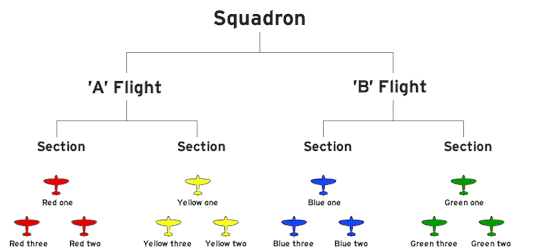
When the battle began, the Luftwaffe were able to operate from airfields in France, enabling their fighters to escort the bombers to Britain. So when the RAF and Luftwaffe met in the skies above Britain and the English Channel, the ineffectiveness of the Fighter Area Attack tactics and Vic formation was soon exposed. As with the required tight formation, only the lead aircraft of every Vic was able to search for enemy aircraft, as the other two aircraft in the Vic had to focus on keeping formation, so an attacking aircraft could catch the formation by surprise, particularly from the rear. Although the tactic was later modified so that the fourth section would fly 1,000ft above and behind the other three sections, whilst weaving, to help minimise the chances of an attack from the rear, casualty rates among these aircraft were high.
Typical RAF squadron formation during flight in the Battle of Britain
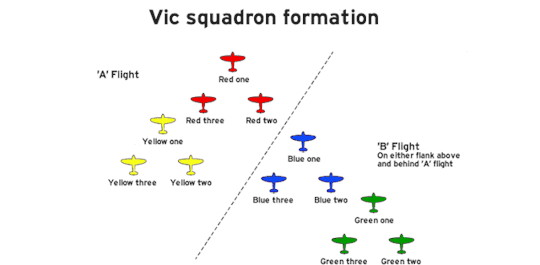
Despite complaints about the Vic formation, no official change was forthcoming, so some squadrons adapted a tactic being used by the Luftwaffe called Schwarm, which was a more flexible tactic. This had been developed after the combat experience of the Luftwaffe's Condor Legion in the Spanish Civil War (1936 – 1939) and would be called Finger-four by the RAF. This involved four aircraft flying in formation, but operating in pairs. This allowed the attacking aircraft to be covered by his wingman with the overall formation spaced at about 200 meters apart and flying at various altitudes. This meant the pilots could focus on looking for enemy aircraft and also protect each other, and if the formation was attacked the two pairs would split up, one going left the other to the right. The Finger-four tactic also meant that the squadron formation changed as it would now be divided into three sections of four as opposed to the Vic formation's four sections of three.
In the aftermath of the battle, Fighter Command modified its tactics in 1941, before, in 1942 the Finger-four formation was officially added to pilot training.
Finger-four squadron formation

Engaging the Luftwaffe
When an incoming raid had been plotted by Britain's Air Defence System, also known as the 'Dowding System' (see diagram below), squadrons would be scrambled by controllers as and when needed, as opposed to a large formation, allowing an enemy raid to be under constant harassment by the Royal Air Force which also had the effect of breaking up the Luftwaffe formations, however, fighter sweeps by the Luftwaffe were not a priority for Fighter Command.
Dowding System

The opening stages of the battle, during July and early August 1940, saw the Luftwaffe probe the Royal Air Force's defences by attacking shipping in the English Channel and targets along the coast. However, mid-August saw the Luftwaffe change tactics and launch Operation Eagle Attack on the 13th August 1940, known as Eagle Day, this saw the Luftwaffe try to lure the RAF into battle in the air by targeting Fighter Command's infrastructure.
Many tactical instructions were issued during the battle, and this new phase saw the first major tactical changes by Fighter Command when, on the 19th August 1940, Air Vice-Marshal Keith Park, Air Officer Commanding, No. 11 Group, Fighter Command, issued a number of instructions. Among these was for RAF fighters to operate only over land or gliding distance to the coast.
Despatch fighters to engage large enemy formations over land or within gliding distance of the coast. During the next two or three weeks, we cannot afford to lose pilots through forced landings in the sea.
And prioritising German bombers as targets.
Against mass attacks coming inland, despatch a minium number of squadrons to engage enemy fighters. Our main object is to engage enemy bombers.
Seven days later on the 26th August 1940, Air Vice-Marshal Keith Park issued further instructions to help with the interception of German formations, as not all squadrons sent to intercept were doing so. This would require details on the intercepted raid to be detailed over the radio to help controllers vector more squadrons to the correct area.
To enable Group and Sector Controllers to put all squadrons in contact with the enemy formation leaders are to report approximate strength of enemy bombers and fighters, their height, course and approximate position immediately on sighting the enemy.
One of the final major instructions issued by Air Vice-Marshal Keith Park was on the 11th September 1940 that when contact was made with the Luftwaffe formation, the Spitfires should tackle the fighter screen, whilst the Hurricanes concentrated on the bombers and close escort. However, as radar couldn't differentiate between the aircraft in a raid it wasn't always possible for this to happen.
READINESS SQUADRONS: Despatch in pairs to engage first wave of enemy, Spitfires against fighter screen, and Hurricanes against bombers and close escort.
By the time this instruction was issued, the Luftwaffe had again changed tactics and were targeting London and other cities across the UK, in what was to become known as the Blitz.
The Big Wing
The use of multiple squadrons for one large formation wasn't a completely new tactic for Fighter Command, as they had been used during Operation Dynamo (26th May 1940 - 4th June 1940) the evacuation from Dunkirk, France. The issue with these larger formations was if vectored to the wrong position, missing the enemy formation, there may not be any reserve squadrons available to intercept the raid instead. As the battle progressed the idea of large formations of multiple fighter squadrons intercepting enemy raids resurfaced, championed by Air Officer Commanding, No. 12 Group, Fighter Command, Air Vice-Marshal Trafford Leigh-Mallory and Acting Squadron Leader of No. 242 Squadron, Douglas Bader
The idea of the Big Wing was to get three to five squadrons (36 – 60 aircraft) to form together and engage enemy aircraft in numbers. Known as the Duxford Wing, it was used for the first time on the 7th September 1940 and was led by Acting Squadron Leader Bader. Comprised of Nos. 242 and 310 Squadrons, flying Hurricanes from RAF Duxford, and No. 19 Squadron, operating from Duxford's satellite airfield RAF Fowlmere, flying Spitfires, they formed together to protect RAF North Weald whilst its squadrons were in combat. They arrived to late to stop the airfield from being attacked but did engage the Luftwaffe and for the loss of one aircraft, claimed eleven German aircraft. This would be a familiar story, as due to the amount of time it took to get the aircraft into formation, it normally wasn't until after the target had been attacked that the Big Wing would make contact with the attacking aircraft.
One of the successes of the Big Wing was its psychological effect on Luftwaffe aircrews, who were told the Royal Air Force was close to being defeated, to then come up against a formation of up to 60 fighter aircraft.
Big Wing formation
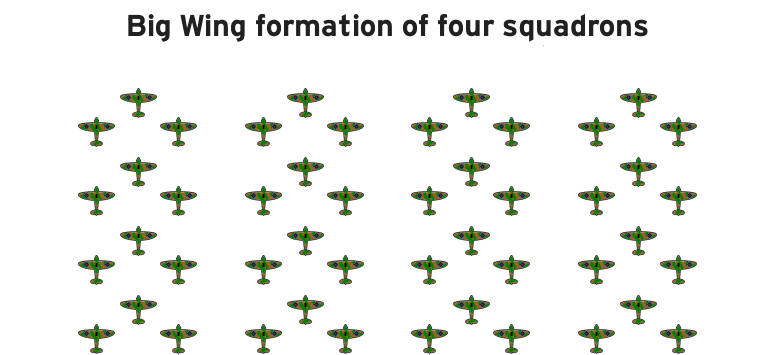
4 notes
·
View notes
Text

Lake Elsinore, California, USA 🇺🇸! Poppies and wild flowers bloom early in the wake of winter rainfall on the upper slopes of Walker Canyon. Photograph: Allen J Schaben/LA Times/Getty Images
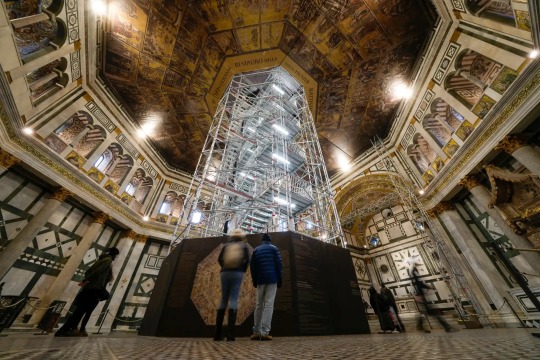
Florence, Italy 🇮🇹! Scaffolding in the Baptistery of San Giovanni, one of the city’s oldest churches, at the start of a six-year restoration project on mosaics created in about 1225. Photograph: Andrew Medichini/AP

Los Angeles, California, USA 🇺🇸! The LA Lakers forward LeBron James addresses the media after becoming the highest-scoring player in NBA history during a game against Oklahoma City Thunder. Photograph: Allison Dinner/EPA
International Garden Photographer of the Year – In Pictures
The international garden photographer of the year competition is now in its 17th year, with a growing number of special awards and partnerships with Unesco world heritage sites such as the Royal Botanic Gardens, Kew and Blenheim Palace. Here are a selection of category winners and commended entries, described in the photographers’ own words — Matt Fidler | Wednesday February 08, 2023
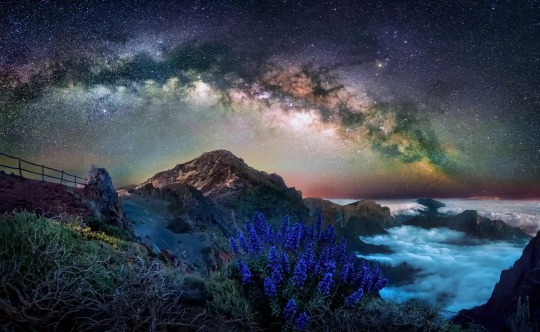
Tony North | First place, Breathing Spaces | Overall Winner | Blue Tajinaste, La Palma, Canary Islands, Spain 🇪🇸! Echium thyrsiflorum is endemic to the mountains of La Palma island – from high up, there was a magnificent view of both the caldera below, and the stars above. The Unesco La Palma biosphere reserve encompasses the entire island, with the Caldera de Taburiente containing mountains with a highest peak of 2,426 metres – the Roque de los Muchachos. Photograph: Tony North/IGPOTY

Claudia Gaupp | Second place, Beautiful Gardens | Bedded on Asters, Höhenpark Killesberg, Stuttgart, Germany 🇩🇪! This double exposure shows a highlight of the perennial borders of the Höhenpark Killesberg: the asters flowering in autumn. A narrow path leads to a bench under a birch tree, and on this evening, there was no better place for me to enjoy this abundance of blooms. Just before the sun disappeared behind the trees, I grabbed my camera to capture this exuberant sea of flowers in all shades of purple. Photograph: Claudia Gaupp/IGPOTY

Caroline Piek | First place, Beautiful Gardens | The Stream Garden, Waspik, Noord-Brabant, the Netherlands 🇳🇱! The Stream Garden is an immersive naturalistic garden, designed by Noël van Mierlo of Van Mierlo Tuinen and landscaped by Totaaltuin Leende, and is shown here in all its glory in the first morning light using HDR. The meandering watercourse that runs through the garden is directly connected to the River Maas and is full of life such as small fish, crayfish and mussels. The garden has an irresistible appeal to children from the neighbouring marina. Photograph: Caroline Piek/IGPOTY
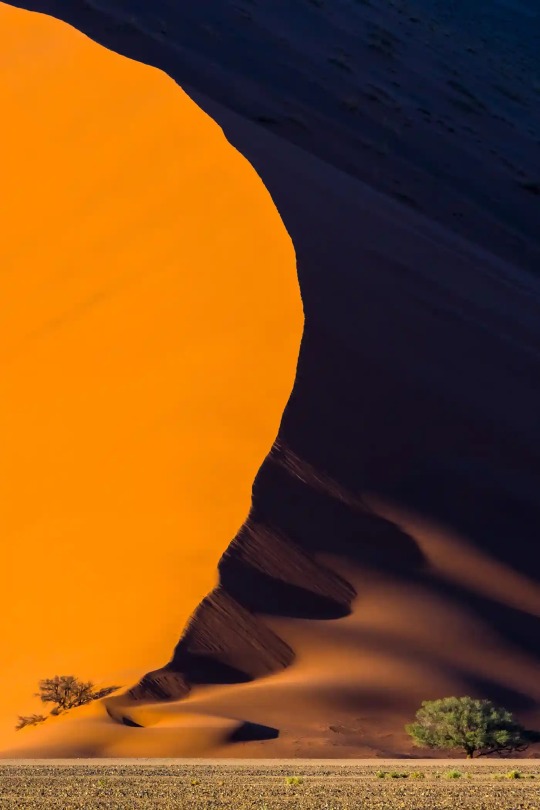
Gigi Williams | First place, MPB Plants & Planet | Dune, Namib desert, Namibia 🇳🇦! I took this photo in the Namib desert, which is home to some of the highest sand dunes in the world; this one was particularly impressive with the tiny trees growing happily at the bottom. It is amazing where plants can grow and how life adapts. Photograph: Gigi Williams/IGPOTY

Masaki Ito | Highly commended, Beautiful Gardens | A Smell So Sweet, Aichi prefecture, Japan 🇯🇵! The many hanging blooms of wisteria smelt so sweet as they reflected in the pond at a garden near to my house. When the flowers bloom in April, it signifies my birthday has arrived again. Photograph: Masaki Ito/IGPOTY

Gianluca Gianferrari | Second place, Breathing Spaces | Veliki Slap, Plitvice Lakes national park, Lika-Senj, Croatia 🇭🇷! Also known as the Big Waterfall, Veliki Slap is the highest waterfall in the Unesco world heritage site of Plitvice Lakes national park. The waterfall is pictured surrounded by autumn-toned trees, and with the (enhanced/added) mist it almost feels as though you could breathe in the power of nature. Photograph: Gianluca Gianferrari/IGPOTY

Jay Birmingham | Third place, Breathing Spaces | Misty Lochan, Glencoe Lochan, Highlands, UK 🇬🇧! In a week-long stay at Glencoe in Scotland, I got up each morning to take a sunrise picture, and each morning I was presented with rain; except for this one morning where I got a brief weather window to take this shot. I managed to get a 60-second shot, which helped to bring out the colour created by the mist and rain clouds. Photograph: Jay Birmingham/IGPOTY
0 notes
Text
5 Must-Visit Places in the UK During Winter
The United Kingdom is a sprawling destination, attracting visitors any time of the year, but there is always something about winter that makes it so surreal. The country offers magical places to visit, from stunning landscapes to bustling towns. Visiting the UK in winter can be a memorable trip to the store because of the great outdoors, the dramatic atmosphere, and the festive vibes.
So why wait? Get your UK tourist visa and visit these best places to explore in the UK during the winter.

5 Top Cities to Visit in the UK To Enjoy Winters
York, England
York, the prettiest city in the United Kingdom, located in the north of England, is one of the most beautiful places in the UK in winter. The city is home to some fantastic Christmas markets, strolling from St Sampson’s Square to Coppergate and the Shambles. You can witness the whole city of York bustling with chalets selling almost every kind of Christmas food and gift.

There is so much to do and see here during the winter. You can explore the festive markets while savouring the delicious treats. Take a stroll through the city streets, enjoying the beautiful decorations and lights that cover the buildings. For an elevated thrill, York has something spooky to thrill you. You can embark on a ghost tour and learn about the city’s shady past.
Edinburgh, Scotland
The capital of Scotland, Edinburgh, tops the list of must-visit winter destinations in the UK. There is never an off-season in Edinburgh, as the city provides numerous activities to keep you entertained throughout the year, and the winters are no exception. The winter holidays offer everything from great shopping sprees to beautiful attractions, such as Edinburgh Castle and Royal Botanic Garden .
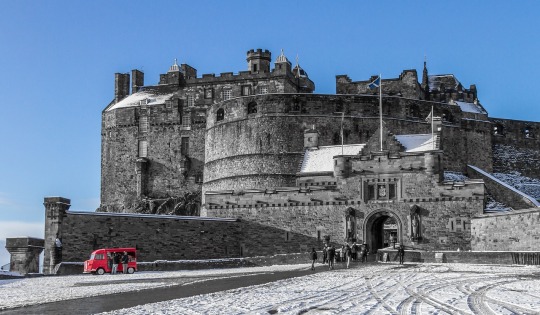
The Christmas markets of Edinburgh are the highlights of the winter season, taking over the majority of Princess Street Gardens. For the shopping addicts, be sure to explore the city’s shopping centres brimming with all the Christmas decorations and beautiful lights, and the foodies can stroll through the German-style stalls offering mouth-watering foods.
Cotswolds, England
The enthralling Cotswolds are a beauty bond to list in the best places to visit in the UK in winter. The quintessentially English villages, towns, snowcapped meadows, and remarkable landscapes—you will never get bored of the beautiful views here.

Explore Blenheim Palace, a perfect place to enjoy the festive season that is lit up with mesmerising lights and decorations. Don’t forget to enjoy a hot chocolate here. If you are looking for bustling Christmas markets with pretty lights, head to Bourton-on-the-Water.
Isle of Skye, Scotland
The Isle of Skye has to be your next and favourite winter destination. One of the most enchanting places in the UK, located in the Inner Hebrides region, is the star of this island. The city offers everything to make it a perfect Scottish vacation, including historic castles, the Peak District, mountains, and fairy glens.

Don’t forget your camera, as you will get an exclusive opportunity to capture a once-in-a-lifetime winter light reflecting off the pools, while the snowcapped Black Cuillin Mountains are a surreal sight to witness. Visit the Fairy Pools for a lovely and romantic time with your loved ones. As long as you wear warm clothes on the Isle of Skye, you can enjoy them all.
Cairngorms National Park, Scottish Highlands
The Cairngorms National Park makes a cosy getaway for the best winter vacation in the United Kingdom. With its lush vegetation and lovely park, it is unquestionably one of the most enchanting locations. Most of the areas here are covered in snow and ice due to their high altitude, making them great for outdoor adventures and activities like sledging, snowboarding, and skiing. The park features low-level and high-level snow activities, giving tonnes of opportunities even for beginners. The trip’s thrill scale gets up a notch as you can spot red foxes, winter hares, and ptarmigans.
Almost every place in the UK is a great place to visit during the winter, but these are must-sees. So, make plans to visit these best places in the United Kingdom in the cold season.
1 note
·
View note
Text
Day Nine: Long Compton to Chipping Norton
This was the first morning that our hotel did not offer food so we ate at a small breakfast spot just across the street. After we ate, a very friendly driver named Lisa drove us back to Long Compton for what turned out to be our toughest day of walking.
Finding the trail was a bit of a chore, but we encountered a local that seemed to know what she was talking about, and we set out on a path that led us straight up a hill for the first several miles. As I said, tough going. Lots of huffing and puffing. But once again, after clearing the summit, the view was magnificent.
The rest of the walk was a mix of rolling hills and paths through trees and small villages, lovely houses, ancient churches and some more friendly cows. For some reason, the cows seemed to be quite curious about our group.
We did take a short excursion off the path to see The King’s Men Stones, a henge smaller, of course, than Stonehenge, but pretty interesting nonetheless. And we were able to walk about the stones to our delight.
Chipping Norton (the name comes from chipping meaning “market” and norton meaning “north town”, hence, North Town Market) had a fine Indian restaurant, Le Raj Cafe, where the eight of us feasted on far too much of its excellent cuisine. Happy and stuffed, we did a short set of our favorite tunes back at our hotel, before settling back in our beds to get ready for our last day of walking, this time to Woodstock, the home of Winston Churchill’s family home, Blenheim Palace.
More to come…
0 notes
Text
Coastal Pacific
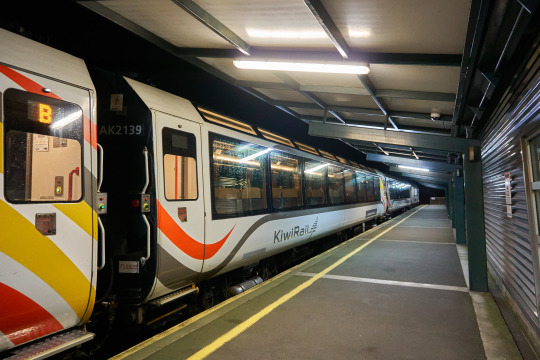
The Coastal Pacific departs from Christchurch at 07h00 for a 5h40 journey up to Picton. Being winter, it was still very dark out, but as we left the city and headed out onto the Canterbury plains the sun began to rise.

I headed out to the viewing carriage to take in the beautiful sunrise as we crossed rivers and passed fields.
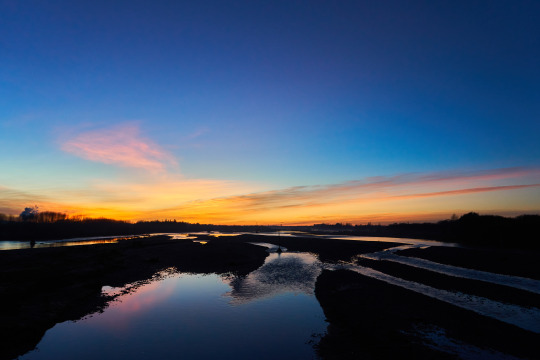


The early morning light (and early morning cold) made the first hour pass in a flash. We kept crossing wide alpine rivers which were super impressive, but also quite difficult to photograph.


As we got further from Christchurch and headed deeper inland the Kaikōura Ranges began to appear on the horizon with their snow-capped peaks.


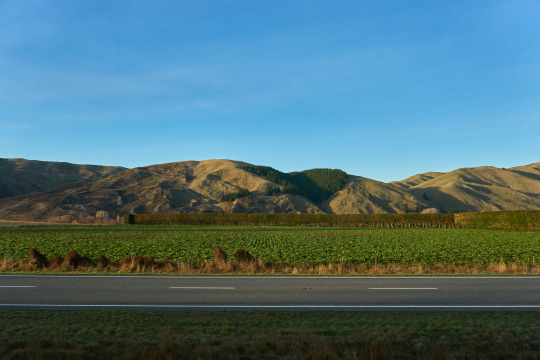
Before long, we hit the coast.

The train follows the coastline very closely which was pretty impressive but also worrying thinking about the inevitable sea level rises to come in the future.

On a more positive note, it was absolutely stunning seeing the sea mist and the imposing green hills with the snowy mountains popping up behind.

Hitting the coast was also a sign we were approaching Kaikōura, the mid-way point on this journey north. We dived back inland for a bit as coastal plains opened up.
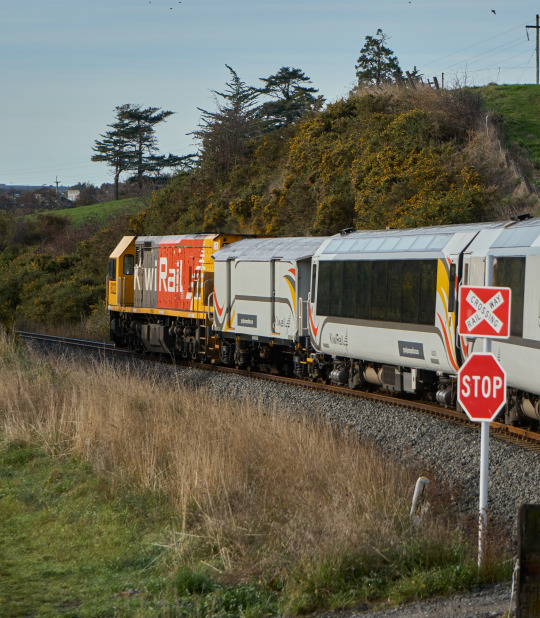
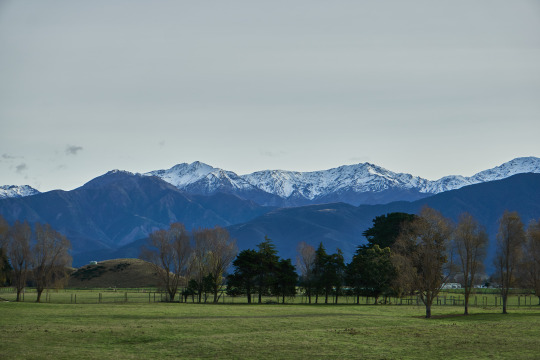
In Kaikōura we dropped off and picked up a few passengers, giving just enough time to jump off the train and walk down the platform and take in the view (of both the mountains and the train).
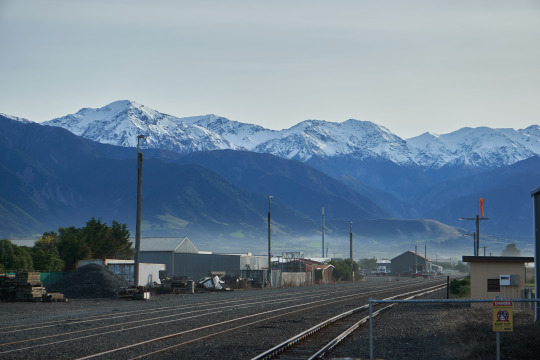

Then the whistle blew and the stragglers rushed back onboard.

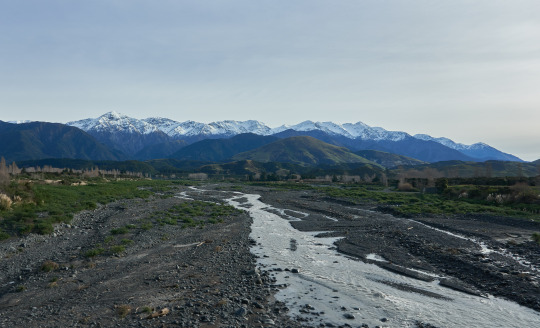
We continued tracking the coast north, but the scenery was was a bit less extreme and felt more inhabited, especially as we joined the freshly reconstructed State Highway 1.


The Kaikōura Earthquake in 2016 destroyed a lot of the road and tracks along this stretch of coast, so everything was very new and flash-looking. Though I preferred the parts of the journey where the rails were in front of, rather than behind, the road.

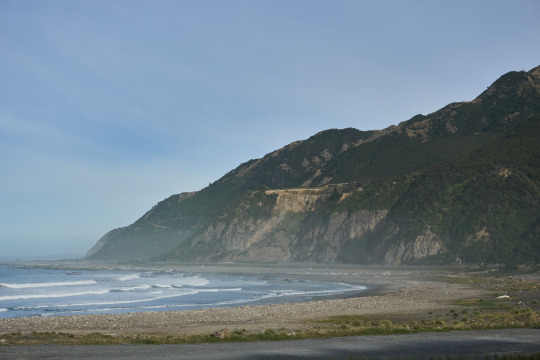
Fortunately we went through some tunnels and soon got closer to the ocean again as we passed some pretty black sand beaches.


We then headed back inland as we neared Blenheim. Passing the pink salt flats of Lake Grassmere on our way.

Once past Lake Grassmere we had to ascend through the Redwood Pass, which gave a hint of what the weather might be like in Picton...



Once over the Pass and back down on the flat we trundled through vineyards around Blenheim.
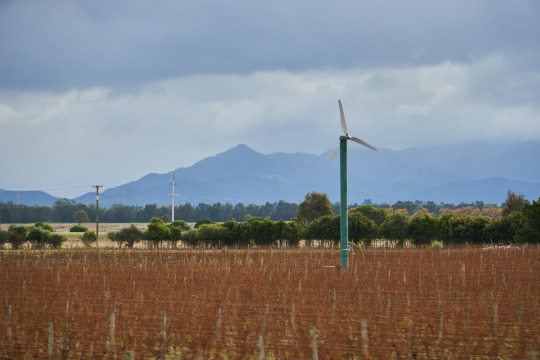

The last thirty minutes of the journey into Picton had some of the most fascinating scenery with deep green forests on one side and bare logged hillsides on the other.


It felt a bit eery passing all these dead trees in the river.
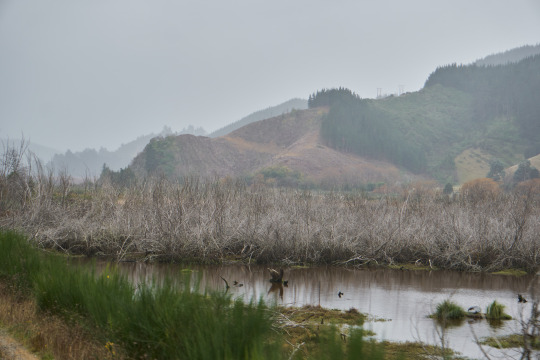
Soon enough we reached Picton where, surprisingly, it wasn't raining and I bid the train farewell before wandering through town to the Interislander terminal.
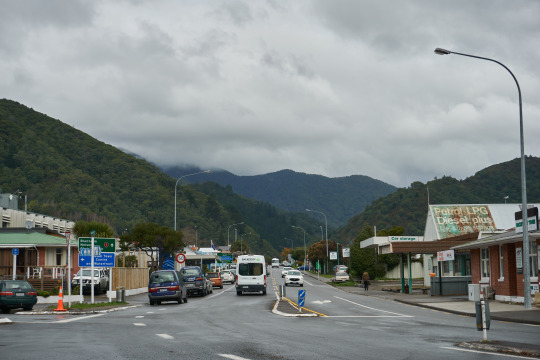
But this is enough of a photo dump for one day so I'll leave that journey for the next post :)
Overall, I was really impressed with the Coastal Pacific. It far exceeded my expectations in every sense. The constantly changing scenery made the time fly by, I think I'd happily do it again just to get a better look at some of the things I missed!
#christchurch#picton#blenheim#kaikoura#kaikoura ranges#mountains#snow capped mountains#train#kiwirail#aotearoa#new zealand#Canterbury Plains#Canterbury#locomotive#coastal pacific#wintertrip21
28 notes
·
View notes
Text
Quatrième - 04/03/2020
Alright, strap yourselves in lads, because I left the writing of this about a week later than I usually do so this post will probably be a bit of a long one. First of all I’d like to say again that yes, I feel that my French is improving quite a lot with each day here - even if I’m not perfect, but confidence is growing and I’m definitely more confident in saying the things I say often.
Now, let’s go back to the 13th of February. My journal entry from that day seems a bit of a negative one, because I was writing about my conflicting feelings that sometimes pop up - whether I should allow my classmates to approach me first and thus seem like the quiet and awkward exchange student, or whether I should approach them first and feel like I’m pushing myself on them. It feels a little overwhelming sometimes to be surrounded by so many cool French people when my language skills often can’t keep up (and perhaps a bit the same with my social skills too 😂). Sometimes it feels like I’m wasting the opportunity right in front of me when I don’t have the confidence to strike up a conversation. As mentioned by Alex in his blog, I know I shouldn’t keep myself at a distance from my peers, but it’s so hard not to fall into the trap of doing that when 1. I’m leaving in only a month (oh my goodness, it’s so soon 😱), and 2. the past two weeks have been holidays and I haven’t seen any of them at all (reasoning for that is distance, being busy, and/or the fact that the week following the holidays - this week - is their BAC blanc exams, which is prelim exams for all you NZ ppl).
The 14th was a better day. Of course it being Valentine’s Day, the Cœur de Troyes is a major attraction on that day. I should have wandered by it to see it all dressed up. That morning I was late to school (great first time French school experience...) I was close to catching the bus, but just not close enough.. How frustrating it was to watch that bus leave without me right before my eyes. I caught the next bus, but it turns out that my bus card had run out that day. However, the bus had already left so I took that ride without a working bus card (oh heck, is that police sirens I hear?) So all in all, that was a day of many bus hardships. Because of all that, I walked home and it was actually really lovely to take the chance to admire the city again. Sometimes I find myself getting a bit comfortable and I have to remind myself that omg I really am a c t u a l l y in France right now!
On Saturday the 15th I went to the market with Marie. The market here is so cool. Lots of bustling people buying all the things they need for the week, there’s live chickens, cheese of course, clothes, a whole lot of other random stuff... The market is a pretty big thing in French culture so I enjoy going and seeing it. That afternoon we drove to pick up Antoine from a friend’s house, who lives a few towns over. It was a really nice day, so the sun hit the rolling countryside really nicely that day. We also drove through some small towns I hadn’t seen yet, and they were very cute. I’ll never stop being impressed by all the beautiful old buildings in France. That evening I made a silly language mistake and mixed up the words for packing bags and doing the dishes, so now whenever I hear one I think of the other. 😅
Sunday 16th had us travelling down to Marseilles for out 5-day holiday. It was a 7 hour drive, but we took the whole day because we stopped off at Marie’s sister’s place for lunch. She and her partner live close to where Alex is placed, so I took this truly wonderful quality photo to demonstrate to him whereabouts I was:

For lunch we had raclette, the weather was very nice, and so was the company. Marie’s sister’s husband’s children were there too. Last minute, it was decided his daughter Ambre would come along on the holiday with us which was nice. So we switched to a bigger car and set off again. When we reached Marseilles it was almost pretty much dark, but I could still see the countryside - different but really nice. The city is an eclectic mix of old and new, and there’s even a Hollywood style sign (like in Wellington!) here’s another definitely really great quality photo...
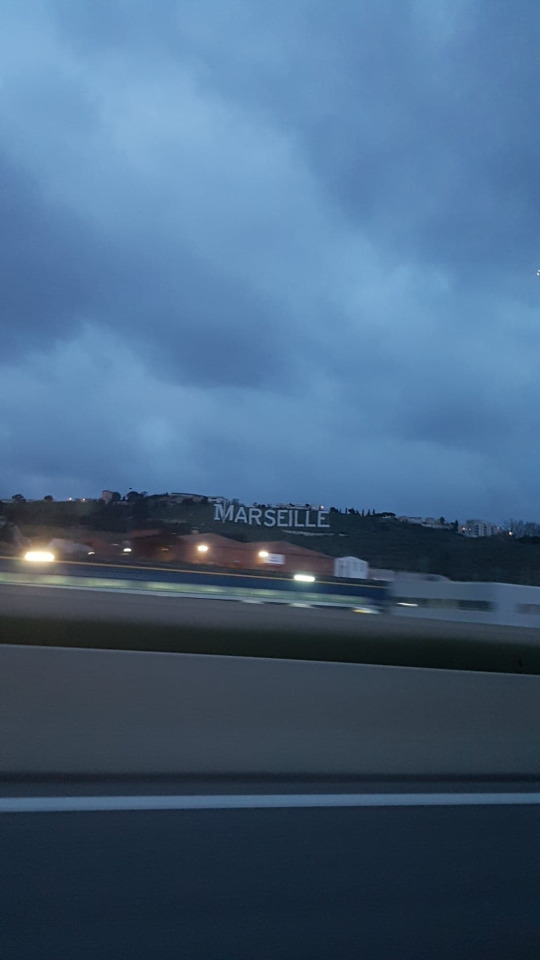
Some of the highlights from our trip to Marseilles:
Visited the museum (called Mucem)
Place des Pistoles
The Cathedral
The Notre-Dame of Marseilles
Picnic on the beach
Visit to Cassis
It’s very easy to get around Marseilles, because there’s a card called “le ticket” which you can access not only the Metro with, but also the busses, which is very useful. The Metro system is also a lot more simple than the one in Paris, because it only has two lines. The city is also quite pretty because it’s this nice mixture of old buildings, street art, flowers and plants overflowing from balconies, sculptures, and sunshine of course. People’s accents in the south are also a bit different to in the places further north, so that was interesting for me to experience too. The first day (Monday) was a bit rainy, so we decided to visit Mucem, which was nice. The museum was incredible. The two exhibits I liked the most were one on voyages and travel, which had a mixture of different art pieces that I really adored. One of them was this light globe, which seemed cool... Until we noticed that the rug in the foreground had left out New Zealand! Typical 😂

The other exhibit I really liked was one on the life and work of the famous and very celebrated French author/poet named Giono. He was a part of the world wars, so a lot of his work is descried as being often very haunting. I hope to be able to read some of it sometime. I wish I could have stayed in the museum for longer and committed the exhibits to memory. After seeing the exhibits, we headed outside onto the roof, where there’s a pretty herb garden and a gorgeous view all around you of the city and the sea.
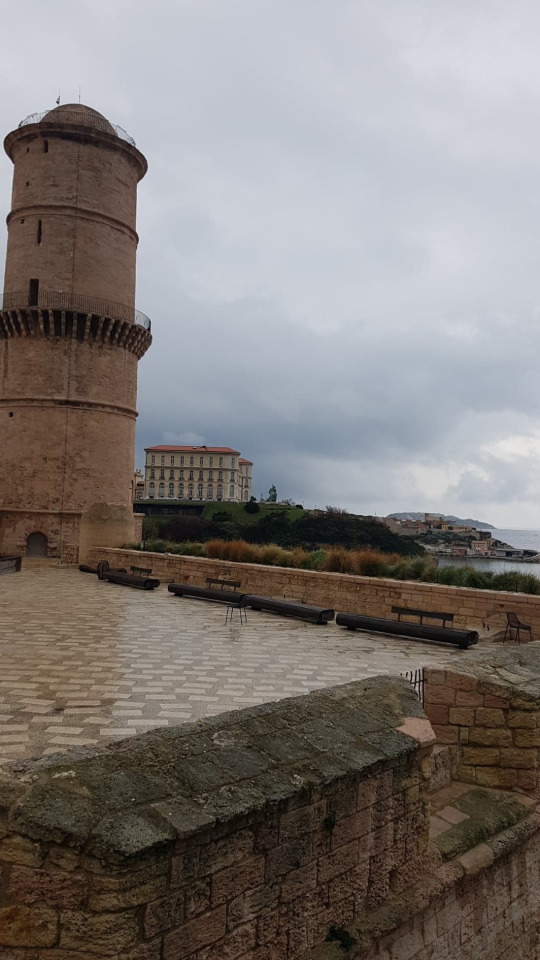
The following days, the weather was a heck of a lot better, with the sun out and about I almost forgot it was winter at some points! On Tuesday we visited a pretty old part of town, and walked along the Place Des Pistoles, which is an area of streets dedicated to street art. it was very pretty, and I guess you could say it felt ... right up my alley 😏


After that, we went to the Catheral which was nice - it was very very big inside, and the weather at that point was very very windy outside.

Following that, we continued with the church thing and went to visit the very high-up Notre-Dame of Marseille. Because it’s so high up we were able to take a bus thank goodness, and there was also a gorgeous view of the city below us.
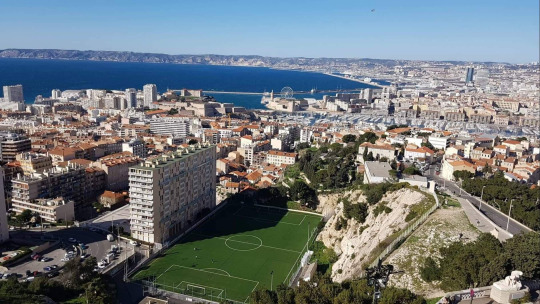
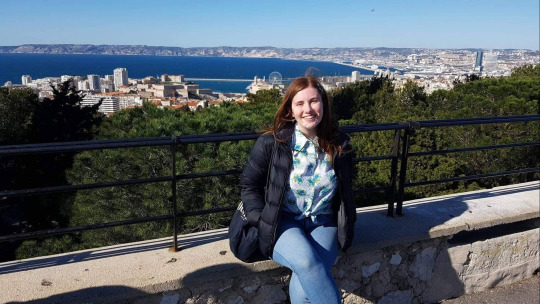
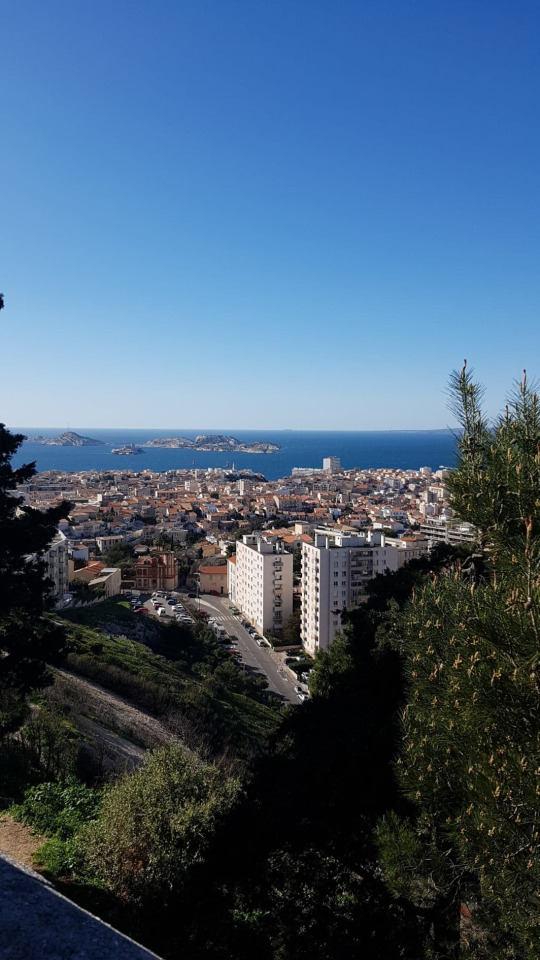
The inside was incredibly extravagant and shiny...

On Wednesday we went for a picnic lunch on the beach. We definitely earned it, as we had many bus mishaps on the way there! It was a very sunny day, but the wind was very strong on the beach. We also amassed a small army of seagulls, pigeons, sparrows, and other miscellaneous birds while we were eating. This is the view back from the shore:
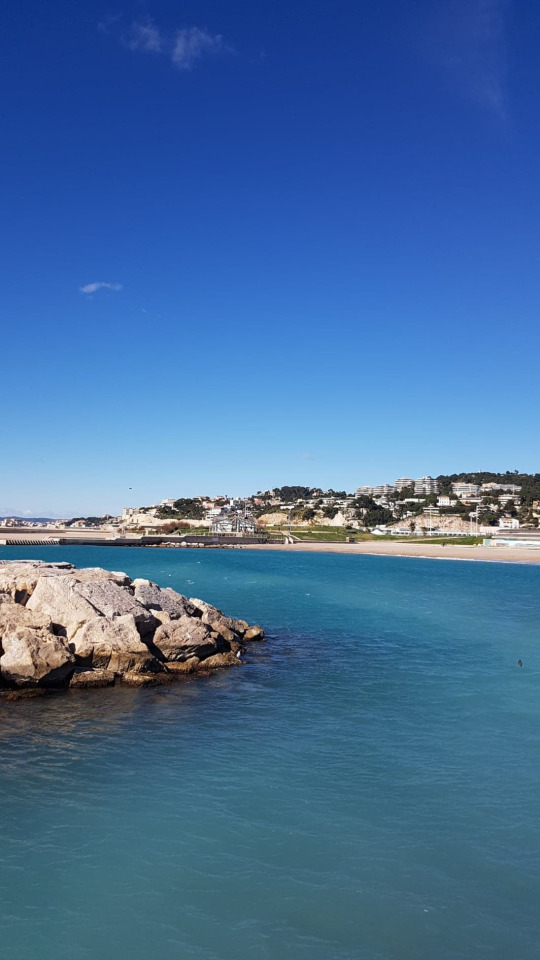
There was also this dude here across the road from the beach:

Thursday was a wonderful day. It was also the half way point of my exchange, whaaaat!?
We drove out to the pretty nearby village of Cassis. It was even warmer there - so warm I didn’t even need to wear a jacket! We went on a short walk first, and got some nice views of the cliff-faces, water, and boats below:
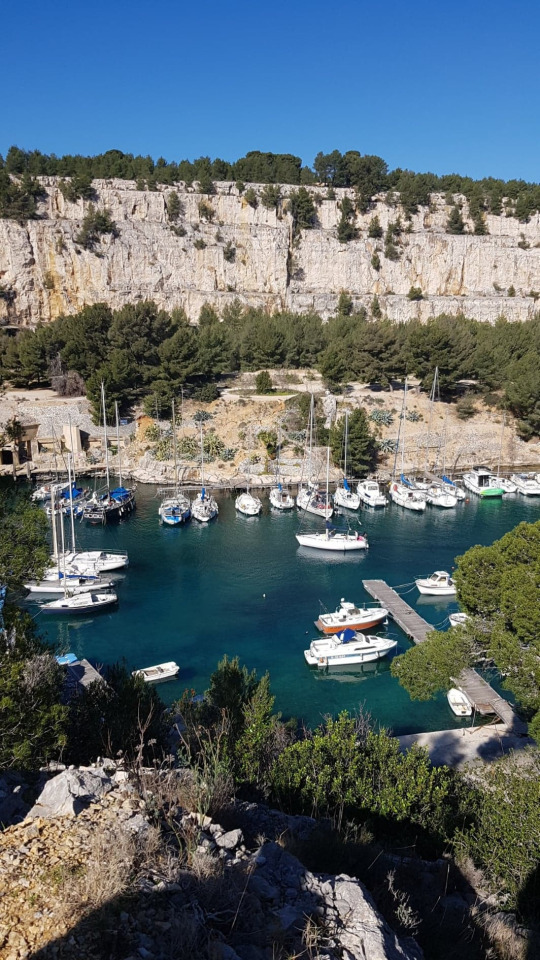
(Cassis has always been a boating/fishing area. I can see why, with how beautifuul the water and the weather is!)
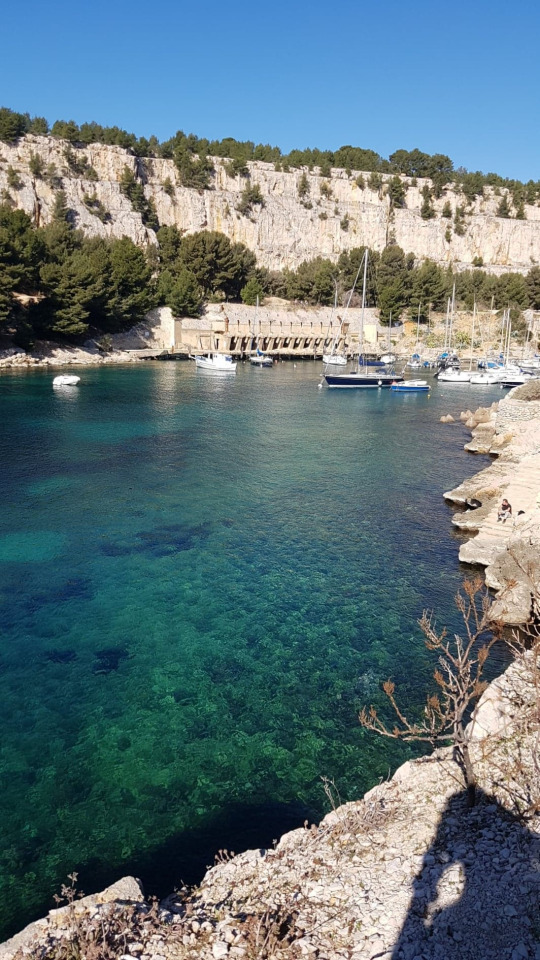
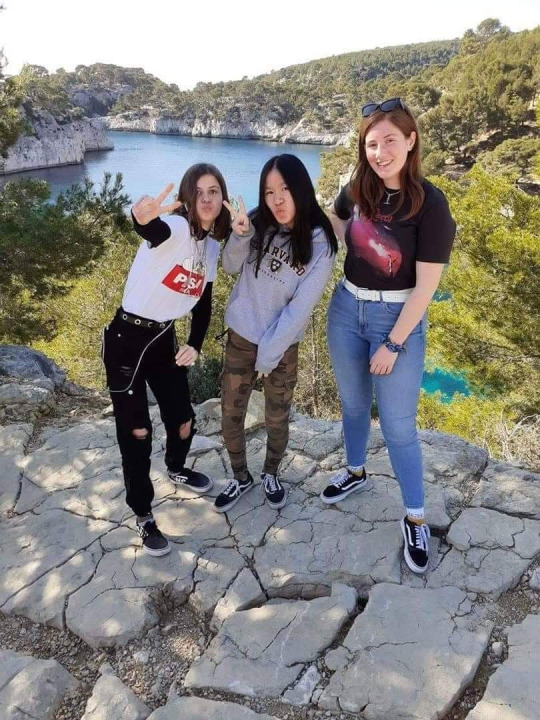
^ Ambre, Lola and I
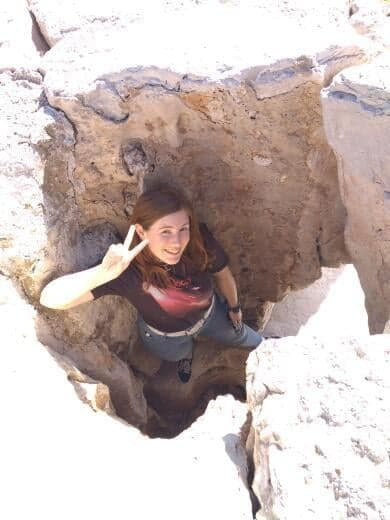
Halfway through the walk, we stopped on some warm rocks for a rest and some lunch. It was really nice in the sun.

Lola, myself, Lola, and Olivier.
Clearly I missed the peace sign memo AND the cup holding memo!
After that, we wandered around the town a litte bit. It is truly a beautiful place - I couldn’t really believe I was seeing it all with my very own eyes.
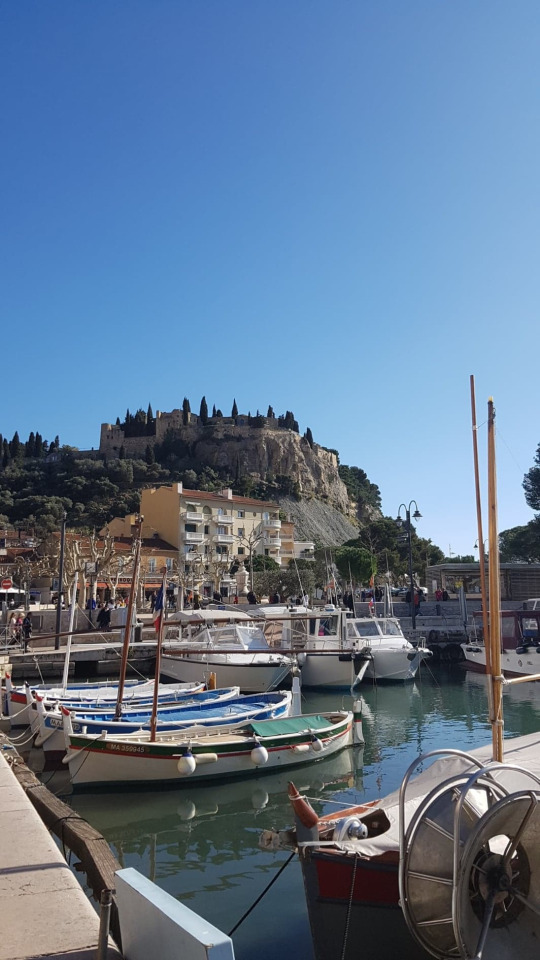
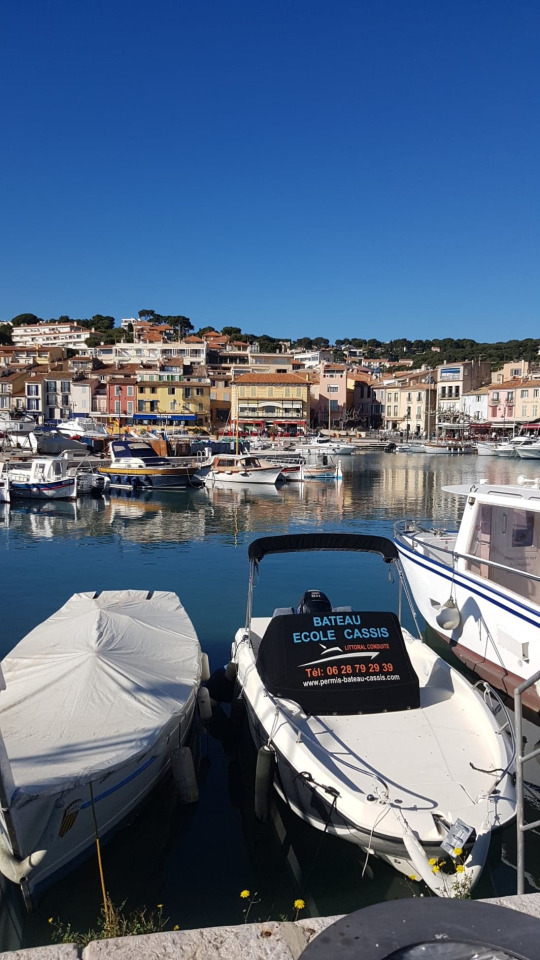

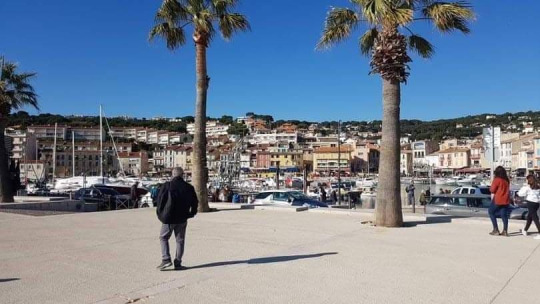
There were also a few groups of people very intensely playing games of Petanque. I think Dad and Lisa would have appeciated that. We then had icecream while looking over all the boats. It feels very odd writing about the nice weather there when currently as I am writing it is 6pm and suddenly very rainy!
That evening, we had dinner at a friend of Marie’s. It was very nice, and their family was lovely and welcoming. I did gett a little overwhelmed at one point because there was a lot of rapid French being spoken by a lot of different people all at once and it was difficult for my tired self to keep up after a big day. However it was still enjoyable. Us younger ones got along pretty well. It’s a little weird, meeting all these nice people here while I’m exchange and realising that I may very well never see some of them again...
On Friday the 21st we drove back home, stopping off to drop off Ambre and to have some lunch there too.
That weekend was quiet. On Sunday Marie’s mother joined us for lunch. We then went to the house in Geraudot for a short while, then went for a walk along a different, bigger, lake nearby. I would love to see it in the summer, when all the restaurants and things were open, people camping just across the road, the golden sand in the sun...
Here’s a picture from the ride home to demonstrate why the landscape here sometimes gives me (coming from Blenheim surrounded by hills) shellshock. Tell me, am I living in that Window’s screensaver we all know and love?

On Monday evening I went to watch my first sports game ever - a French football game (sorry Kiwi rugby diehards). The Troyes football team is called Estac. The game felt a little slow at times, but other times I found myself getting pretty into it! A good experience in general.

On Wednesday evening, three friends of Lola’s came for an early overnight celebration for Lola’s birthday. We played a game called “Ta Mere En Slip”, which is a little like “Heads Up”, but with a person and an action to guess. Here’s a photo from that:

Thursday 27 February - Paris no. 2
On Thursdays, usually Marie works in Paris, taking an early train there and an evening train back. We decided that it could be a cool idea for me to travel over with her and spend the day by myself. It was an... interesting day, to say the least.
We had an early start, took the train, and then recharged my Metro card once we got there. All good, mostly, except until the card didnt work, which was a little awkward and confusing 🙄 After getting through that, Marie and I parted ways; she on her way to a meeting at work, and I on a metro to the Louvre. I had some trouble with the many confusing lines once I got there, and another tourist even asked me if she was in the riht line, to which I replied that I was sorry I was also rather confused! I hope she found her way in the end, because we were both very much in the wrong line but for different reasons. I found the correct line for me, and then I was in the Louvre! I ended up spending upward of three hours here, there was so much to see. Beautiful paintings that are so nice to appreciate in person, Greek and Roman sculpture (my inner classics nerd was wilding, it was great to see these things that I’d studied up close), some gorgeous neoclassical and otherwise French sculpture, beautiful extravagant objects from past French royalty, even Eastern and Egyptian antiquities. There was just so much and of course it was impossible to see it all (though naturally I tried - my sore feet did not thank me later). That moment of awe you feel when you see something that you truly ove is near indescribable. Here’s some photos of some of my favourite things that I saw:

A bust of Alexander the Great

Some very impressive, large paintings

The very very extravagant ceiling in one of the gallery rooms
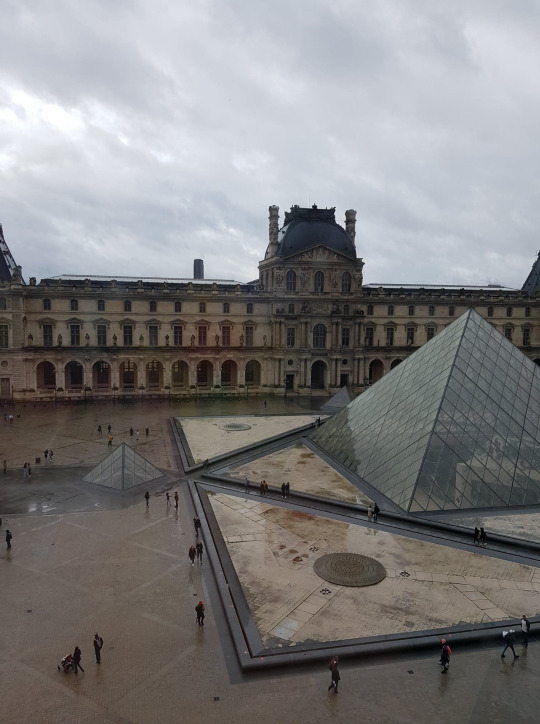
A view of the pyramid, the little doll people, and the not-so-great weather outside from the beautiful objects area with all the past belongings of French monarchs
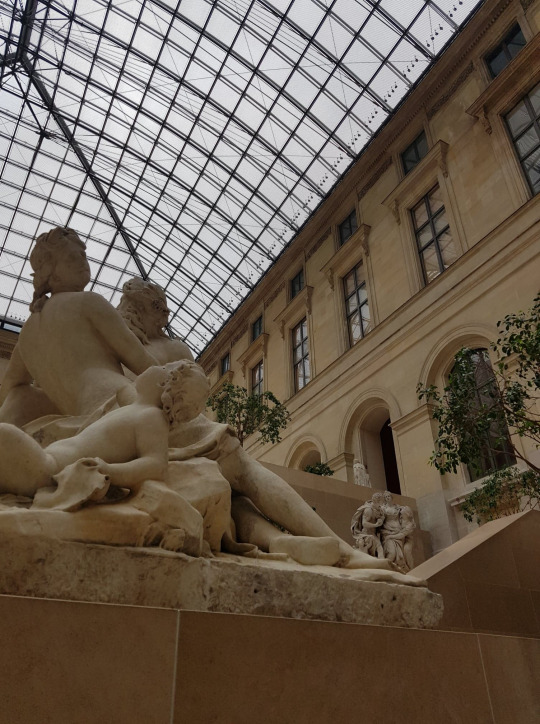
A nice piece from the French sculpture area
I got pretty lucky with my trip to the Louvre for a few reasons. One was that my ticket was for the morning at opening time, so I managed to get in before the worst of the crowds. Pretty awesome being able to wander around without being hindered too badly by lots of other people also trying to get as close as they possibly can to every piece. The other reason I got lucky was because the Louvre is now closed. It closed on Saturday the 29th of February, and remains closed now, it being unclear when it may open again. This was following an announcement of a nation-wide ban of gatherings of more than 5000 people in a confined space. The Louvre, of course, falls under this category.
Anyway, after that very long musemum trip, I was happily full with appreciation for art nd culture, however I was also very hungry and thirsty (no drink bottles allowed in the museum haha). So I went outside and got myself a bite to eat from a bakery stall outside, which I had overlooking the pretty garden outside (yes it was raining a bit and the bench was a little damp too, so yes I sacrificed my rain jacket to sit on). The interaction I had with the person at the bakery stall felt like the most natural interaction all in French I had had with a customer service person so far. I think that was the proudest I’d ever been of myself simply for ordering a sandwich! 😂 It was nice to just sit down with my food and admire my surroundings and people watch for a while. I could even see the Eiffel tower fro my spot, which was nice. I then wandered all the way through the garden, admiring the flowers and fountains and sculptures and the many many empty benches. I’d love to see how it looks in the sun - I bet those benches will be pretty well occupied in the springtime. After that I went on a mission for toilets and discovered the truly wonderful and fantastic thing that is Paris’ tendency for toilets that cost money to use. After that delightful exprience I headed to see the Obelisk. I may have been walking against the wind and rain, but the area was still pretty.
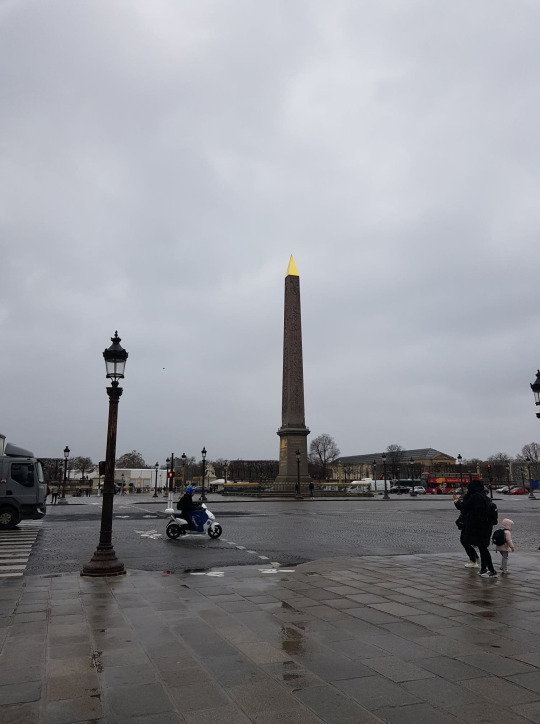
I then walked all the way down the Champs- Élysées (my poor feet), until I reached the Arc de Triomphe. It was by then only the early afternoon and I realised I was at a bit of a loss as to what to do. I had options, of course, but the travel to them on the metro or busses or otherwise seemed confusing and I had the added issue of not having any data or wifi to use google maps with. (Next time I am definitely getting some data - that would have solved a whole lot of problems 🙄). Long story short, one thing led to another and I ended up stressy ugly-crying with a burger I didn’t want in a McDonalds just so I could use the wifi to try and make sense of the metro system, while messaging Marie. Then to top it all off, my bathroom grievances continued because, naturally, the bathroom in that restaurant was another one that costed, and I had spent the last of my change on that burger. Dang. Anyways, I decided to go down to the metro to try and find my way to the Montmartre church. However, my metro card problems continued, my confusion of the metro system continued, and I ended up on the phone to Marie who said she would come meet me. I felt very bad that she left work for me, she said it was all okay, but naturally I still felt bad. She found me eventually, a littel tearstained and very embarrassed, and we headed on the metro to Montmartre together. She tried to explain the metro system to me a bit more, which was good and I feel like I’ve got a liiiittle bit of a better handle on it now.
On the steep walk up to Montmartre there were lots and lots of tourist shops, and then a lot a lot of stairs, with some street art on the walls which was pretty cool. The church was very pretty. We didn’t go inside, but the outside was very nice. All the surrounding fences were cooovered in lovers’ padlocks
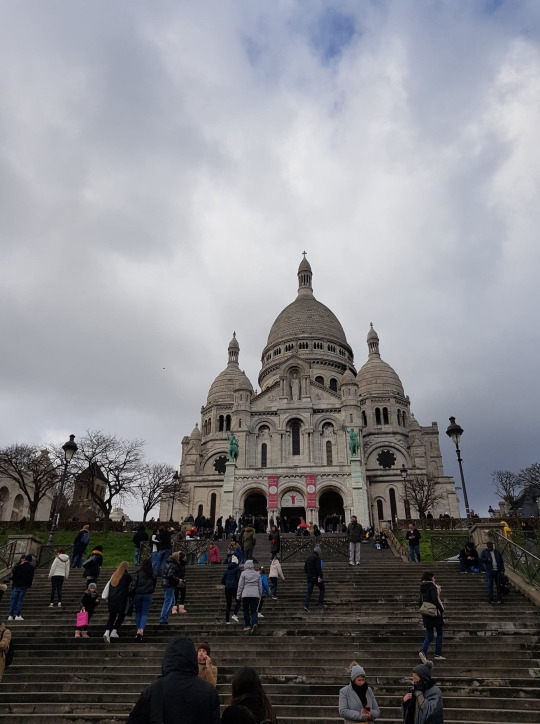
The viewn was also very nice. Paries views (and I think French views in genral?) are always interesting. A mix of that classic Parisian architecture, you know the one -modern buildings, well-known monuments, building cranes, oooold old buildings and monuments, and sometimes the odd bit of big street art on the high-up walla. It’s never the same view you expect to see.
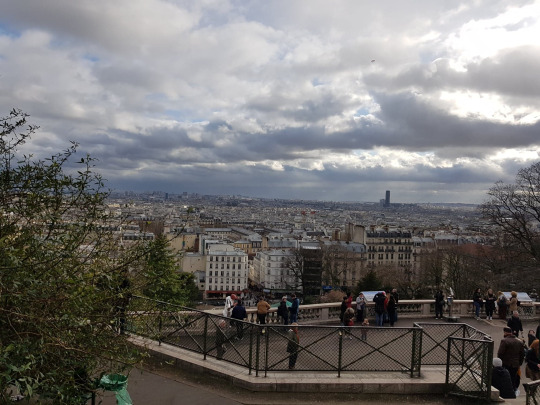
After that nice wee trip we went to grab a coffee and stop off at the cafe’s toilets before we headed home. However, toilet grievance number 3 hit us suddenly because the toilets were out of order. After that we decided to head to the train station and leave a littel earlier than originally planned. I was so tired after a big day I couldn’t help but fall asleep on the train 😂 Once we were back home I recounted my metro meltdown and we all decided that perhaps public transport (missing train stops, being confused by the metro and bus syetems...) is simply not my strong point, lol. Anyways, despite the stressy moments of that day, all in all it was a good experience, and the good moments were really enjoyable. I’m not going to letit deter me, and I hope in the future I’ll have more chances to explore the city and improve my knowledge of how to get around.
Saturday the 29th was a good day. We had gratin dauphinois for lunch, which was cool because it reminded me of my Nanna because it was one of her specialties, and it reminded me of the one time I made it for a culture project for French class. That afternoon, Marie and I headed back to the museum with the section on bonneterie, because there’s a new exposition there at the moment. It’s on the brand of socks called Doré Doré, celebratng it’s 200 year anniversary (weird that a sock brand in France is older than the entire government in New Zealand), and the factories have been based in Troyes since the beginning. It was cute, and a littel funny with all the little socks and things. There were lots of these big sock wall decorations outside the exhibit:
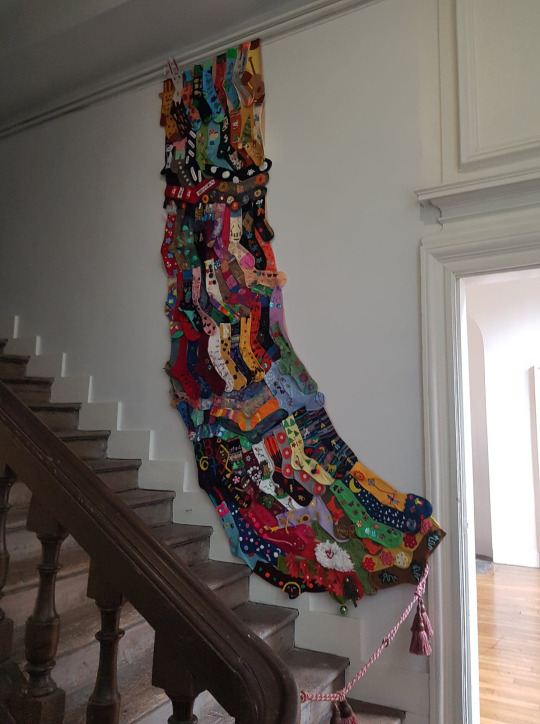
Sunday was the last day of the holidays. In the morning Marie, Lola and I went to the bakery to pick up Lola’s birthday cake. Her birthday isn’t until the 7th, but on Sunday afternoon there was some family coming to celebrate. It’s funny when we go into any store, every time the cashier assumes I’m a separate customer, so I’m now well practiced at saying oh no thank you we are all together. For lunch, Marie’s mother, brother, his partner, and their young son Jack-Jack came around. There was nice conversation, nice food, and then a game of ‘Ta Mere En Slip’. They’re all very nice, and it feels easier now than every for me to speak French with groups of people. It’s still hard sometimes, but it’s much better!
Yesterday was interesting. It was sort of the first day back at school. I got up early, Marie took Lola and I to school as usual... However I had neglected to check what the case was with the BAC blanc exams this week. Turns out that no, there is no classes at all, and it is in fact just tests all throughout the week. So that was an interesting time for me, turning up there and my classmates finding it funny I was there at all. So I just headed back home after spending a little while in the school library, and sike! I have, in some ways, another week of holidays... I’m thinking I might do some more exploring, go back to the museum, I could go to the movies and try watching something in French again, I could write some postcards or things home... Today I’ve just been writing this blog entry this morning, I’ve gone out to eat pizza for lunch with Marie, but the weather today is lovely (much better than the rain last night), so I might go do something. I am in absolute disbelief that I have less than 4 weeks left on exchange. Where did the time go? I swear I must comment on how fast the time is going by at least a few times a day at this point. But wow, it really is going fast.
Until next time!
#france#student exchange#troyes#france exchange#nziiu#nziiuambassador#nziiustudentexchange#aria in france
3 notes
·
View notes
Text
Day 20. February 18, 2020. Havelock day rides. 100km.
Woke up to a light drizzle. Eye swelling down to near normal. 👍 This is supposed to be the last of our recent series of wet days. The cider didn't have any ill effects and we strolled across the street to the Sneaky beach cafe. I had a steak & mushroom pie but was significantly out ordered by the eggs Benedict with salmon that were delivered across from me. 👀 No chance to ride in more comfortable gear due to rain and also projected gravel/dirt encounters today. We geared up and headed south. Somehow we missed the Queen Charlotte Road turnoff right in town and instead went nearly to Blenheim before we realized we had missed it. Oh well. We were in the very heart of the Marlborough wineries north of Blenheim. Perfectly manicured rows of grapevines spread out far and wide from both sides of the roads. The countless vineyard rows were broken up by picturesque wineries and inns. Looks like a great place to have a wine tour! 🍷 We detoured a few miles south to Blenheim outskirts and rejiggered our plan. We opted to take the twisty and notable coastal roads Port Underwood ( dirt/gravel and steep with hundreds of sharp turns) and the aforementioned Queen Charlotte which was paved with similar elevation changes and twistiness. The rain ensured that Port Underwood was taken mostly in first gear. The possibly more than a dozen bays of various sizes were reluctant to yield their full beauty due to the rain, some fog, dense foliage and some being entirely private. A few had only one to three people living there and any egress was gated. However there were a few spots that rewarded with tumbling bay views, nearby islands and even a pretty good look at the North Island (first pic above) in the distance. That's about 27 miles away!
We saw one of the inter island ferries steaming towards Picton. Picton is the place on the S. Island where the ferries from Wellington (N. Island) dock. Every hour or so it seems a ferry is coming or going. Large ships loaded with trucks, buses, cars and people. Picton has a busy downtown and we parked our bikes right in front of some of the waterfront cafes. Decided to grab a table outside at the Seabreeze cafe on the corner of High St. & London Quay. We rode past four old British bikes (at least one Matchless) for the second time on our way to the water. I ordered lunch which was tiger prawns with garlic, coconut milk, chili and ginger along with toasted ciabatta. That was followed by a warmed orange and chocolate muffin. 😋 As I sat there before leaving the vintage British bikes rolled up toward the ferry. One, two, came on through the intersection. Number four had his engine die right in front of me! In fact he rolled it back to a spot right next to my bike as it was a slight uphill to the traffic circle and started checking all his wires. After a few minutes he rolled it back down the hill and onto a sidewalk with number 3 and they proceeded to try to figure out what was the problem. Love old bikes but this is why I don't ride them! Felt bad for him but he could've pushed it to the ferry if he had to from that position. We shopped a little and I bought an oilclioth supposedly crushable hat. Good for the rain as none of my baseball hats were very rain proof. From Picton we took the continuation of the dramatic road and views via Queen Charlotte counter clockwise up the coast then angled inland a bit to catch up with Havelock. Only a 100km day but the most death grips on the handlebars of the whole trip due to grade and slickness on Port Underwood. A little lie down was in order but turns out it was usurped by Boggle catch up and this very blog. That's OK, have been getting good sleep here. Still stumped by the lack of people here. We made a similar loop of the loca establishments to last night. I ordered the seafood pasta which was excellent at the Slip Inn. The Captain's Daughter was out of food due to a Lions Club meeting upstairs. The drizzle seemed to be ending by around 8. Hoping for some better light for views and pics tomorrow. Great day though! 😴
https://www.google.com/search?q=port%20underwood%20road
2 notes
·
View notes
Text
New zealand
>h2>Travel planning New zealand Here at the campsite you can spend your first night in New Zealand in a relaxed way. Recover a little, soothe your jet lag and enjoy the first impressions. If you are jetlagged, the first day ends after only 32 kilometres in the Chamberlains Ford. Queenstown is definitely one of the most popular New Zealand highlights on the South Island. It is a city of extreme sports and adventure awaits you everywhere. Which also means that they can be full at peak travel time. The city of Queenstown is idyllically situated on Lake Wakatipu in the Southern Alps. The city is especially popular because of the huge offer of outdoor activities. From the town you can take the cable car (Skyline Gondola) up to Bob's Peak and enjoy a magnificent view of the town and the lake. Read more about campervan hire New Zealand here.

A unique variety of animals can also be found here, for example the endangered yellow-eyed penguin in Flea Bay.
The place is a good starting point for tours to surrounding attractions such as Lake Tennyson, Rainbow Station or Nelson Lakes National Park.Okains Bay you can also visit a great Maori museum. All links to positions we give are links to Google Maps. Thundering waterfalls rush over cliffs and cascades in the fjords directly into the sea.
The small coastal town is the perfect starting point for trips to the Marlborough region. At the very north of the South Island lies one of the most beautiful coastal areas in the world. Fantastic golden sandy beaches border on untouched bush forests with Nicaupalms and giant ferns, surrounded by rugged mountain ranges. The two picturesque coastal towns of Nelson and Blenheim in New Zealand's sunniest region each have their own special charm. In Blenheim, the best way to experience the local wine and food culture is on a bike tour through the vineyards.
3. The Abel Tasman National Park is one of New Zealand's highlights because of its beautiful beaches and forests
Most hikers need about 2-4 days for the trail. The starting points are at the Routeburn Shelter near Glenorchy, the other at the village of Te Anau. As with all Great Walks in New Zealand you should book your accommodation well in advance at a local DOC visitor centre or the official website. Around the lake, parachute jump providers also offer their services. The river meanders picturesquely through the gorge of the same name.
1 note
·
View note
Text
Ginger Ale Market Analysis, Key Company Profiles, Types, Applications and Forecast to 2027

Ginger ale is a ginger-flavored carbonated soft drink consumed across the world, which is prepared using sugar, carbonated water, and ginger root. It is also flavored using artificial flavors such as lemon, lime, can sugar, and others. It is often used for home remedy such as indigestion, motion sickness, and relief from cough & sour throat. It is available in two forms, golden ginger ale and dry ginger ale. Golden ginger ale is darker in color and has an intense flavor of ginger, while the dry ginger ale has a pale color and has a much milder ginger flavor. Ginger ale is often mixed with alcoholic and nonalcoholic drinks.
Increase in preference of low-calorie soft drinks as compared to high-calorie soft drinks drives the growth of the ginger ale market Moreover, as these drinks are less sweet, they possess several health benefits, which fuel their demand, thereby supplementing the market growth. Furthermore, availability of wide range of flavors in ginger ale boosts the market growth. However, availability of substitute drinks restrains the growth of market. Introduction of new flavors and enhanced taste are expected to provide potential growth opportunities for the market.
Download Report Sample Pdf: https://www.alliedmarketresearch.com/request-sample/3407
The ginger ale market is segmented on the basis of type, distribution channel, and geography. By type, the market is bifurcated into golden ginger ale and dry ginger ale. On the basis of distribution channel, it is classified into convenience stores, supermarkets/hypermarkets, specialist stores, and others. Geographically, it is analyzed across North America, Europe, Asia-Pacific, and LAMEA.
The major players profiled in this report are Dr Pepper Snapple Group, Bruce Cost Ginger Ale, Hansen Beverage, Zevia, Blenheim Bottling Company, Polar Beverages, Honest Tea, Seagram, Buffalo Rock Company, and Boylan Bottling Co.
Key Benefits
The study provides an in-depth analysis of the market with current trends and future estimations to elucidate the investment pockets.
Comprehensive analysis of factors that drive and restrict the growth of the market is provided.
The report provides a quantitative analysis to help the stakeholders to capitalize on prevailing market opportunities.
Extensive analysis of different segments facilitates to understand various products of the market.
Key players are profiled and their strategies are analyzed thoroughly, which predict the competitive outlook of the market.
Get detailed COVID-19 impact analysis on the Ginger Ale Market: https://www.alliedmarketresearch.com/request-for-customization/3407?reqfor=covid
Ginger Ale Market Key Segments:
By Type
Golden Ginger Ale
Dry Ginger Ale
By Distribution Channel
Convenience Stores
Supermarkets/Hypermarkets
Specialist Stores
Others (Mass Merchandisers and Independent Retailers)
By Geography
U.S.
Canada
Mexico
UK
Germany
France
Spain
Italy
Rest of Europe
China
Japan
India
Australia
South Korea
Rest of Asia-Pacific
Brazil
South Africa
Argentina
Turkey
Rest of LAMEA
Inquire or Share Your Questions If Any Before the Purchasing This Report: https://www.alliedmarketresearch.com/purchase-enquiry/3407
About Allied Market Research:
Allied Market Research (AMR) is a full-service market research and business-consulting wing of Allied Analytics LLP based in Portland, Oregon. Allied Market Research provides global enterprises as well as medium and small businesses with unmatched quality of "Market Research Reports" and "Business Intelligence Solutions." AMR has a targeted view to provide business insights and consulting services to assist its clients to make strategic business decisions and achieve sustainable growth in their respective market domains. AMR offers its services across 11 industry verticals including Life Sciences, Consumer Goods, Materials & Chemicals, Construction & Manufacturing, Food & Beverages, Energy & Power, Semiconductor & Electronics, Automotive & Transportation, ICT & Media, Aerospace & Defense, and BFSI.
We are in professional corporate relations with various companies and this helps us in digging out market data that helps us generate accurate research data tables and confirms utmost accuracy in our market forecasting. Each and every data presented in the reports published by us is extracted through primary interviews with top officials from leading companies of domain concerned. Our secondary data procurement methodology includes deep online and offline research and discussion with knowledgeable professionals and analysts in the industry.
Contact Us:
David Correa
5933 NE Win Sivers Drive
#205, Portland, OR 97220
United States
USA/Canada (Toll Free): 1-800-792-5285, 1-503-894-6022
UK: +44-845-528-1300
Hong Kong: +852-301-84916
India (Pune): +91-20-66346060
Fax: +1(855)550-5975
Web: https://www.alliedmarketresearch.com
Follow Us on LinkedIn: https://www.linkedin.com/company/allied-market-research
0 notes
Text
Severe thunderstorm, heavy rain brings surface flooding to Napier and Blenheim
Severe thunderstorm, heavy rain brings surface flooding to Napier and Blenheim
Severe thunderstorms which hit Napier earlier this afternoon have now arrived in Blenheim.
A sudden deluge caused by the southbound storm has caused damage to the Clubs of Marlborough. Its chief executive Dan Roos said the heavy rain “sounded like a waterfall” coming off the roof by his office on Friday evening.
“And then it turned to hail.”
The city and areas to the north have experienced…
View On WordPress
0 notes
Text
Peter Jackson and the Airplane Thief
Peter Jackson and the Airplane Thief
Some of the planes went to museums, others to very wealthy private collectors. Jackson, to this day, keeps many for his personal pleasure—and to share with his countrymen. For years, they flew regularly in air shows over Blenheim, on New Zealand’s South Island, and at the Hood Aerodrome, on the North Island outside Wellington. Jackson and DeMarco brought early aviation back to life in the skies…

View On WordPress
0 notes
Text
St Pauls Cathedral London Building: Architecture
St Pauls Cathedral Architecture, Christopher Wren Building, Architect, Date, Picture
St Pauls Cathedral London
Religious Building in England: Architecture design by Sir Christopher Wren, architect
page updated 7 Nov 2020
St Paul’s Cathedral
Location: central / east London, north of the Thames
Date: 1675-1710
Architect: Christopher Wren
photo © Adrian Welch
St Paul’s Cathedral Funding
St Paul’s Cathedral has been given £2.1m as part of the government’s £1.57bn Culture Recovery Fund.
The latest raft of funding sees more than £14m awarded to 162 heritage organisations such as St Paul’s, Durham Cathedral and Blenheim Palace.
photo © Adrian Welch
A further £18m has been given to eight arts venues and organisations, like Ronnie Scott’s Jazz Club, Opera North in Leeds and The Lowry in Salford.
The culture secretary hopes it will help them through the Covid pandemic.
New photos from 12 Nov 2012:
photo © Adrian Welch
St Paul’s Cathedral
Architect: Sir Christopher Wren
Years built: 604; 962; circa 1088 to 1314; 1677
photo © Adrian Welch
Summary of key aspects of the building:
– Church of England cathedral
– seat of the Bishop of London
– dedication to Paul the Apostle dates back to the original church on this site, founded in AD 604.
– St Paul’s sits at the top of Ludgate Hill, the highest point in the City of London
images © Andrew McRae
– present church dating from the late 17th century
– built to an English Baroque design of Sir Christopher Wren
– as part of a major rebuilding program which took place in the city after the Great Fire of London
– was completed within his lifetime.
– one of the most famous and most recognisable sights of London
– dominating the skyline for 300 years.
– 365 feet (111 m) high, it was the tallest building in London from 1710 to 1962
photos © Nick Weall
The dome is also among the highest in the world.
photos © Nick Weall
In terms of area, St Paul’s is the 2nd largest church building in the United Kingdom after Liverpool Cathedral.
photos © Adrian Welch
St Paul’s Cathedral occupies a significant place in the national identity of the English population. It is the central subject of much promotional material, as well as postcard images of the dome standing tall, surrounded by the smoke and fire of the Blitz.
Important services held at St Paul’s have included the funerals of Lord Nelson, the Duke of Wellington, Sir Winston Churchill and Margaret Thatcher; Jubilee celebrations for Queen Victoria; peace services marking the end of the First and Second World Wars; the wedding of Charles, Prince of Wales, and Lady Diana Spencer, the launch of the Festival of Britain and the thanksgiving services for the Golden Jubilee, the 80th Birthday and the Diamond Jubilee of Elizabeth II. St Paul’s Cathedral is a busy working church, with hourly prayer and daily services.
Source: wikipedia
photos © Adrian Welch
Contains famous Whispering Gallery under the dome
Stone Gallery – panoramic view over London
Golden Gallery accessed via stairs between inner & outer domes
photos © Adrian Welch
Nearest Tube: St Paul’s
St Paul’s Cathedral – contact: 020 7246 8348
St Pauls Cathedral Architect – Christopher Wren
St. Paul’s Cathedral : Lighting Award
St Pauls Cathedral photographs taken with Panasonic DMC-FX01 lumix camera; Leica lense: 2816×2112 pixels – original photos available upon request: info(at)e-architect.co.uk
View across the River Thames:
Christopher Wren Architect
Location: St Pauls Cathedral, London, England, UK
London Buildings
Contemporary London Building Designs
London Architecture Links – chronological list
London Architecture Tours by e-architect
London Architects Offices
London Architecture
Key Buildings by Christopher Wren in London
St Mary-le-Bow
St Stephen Walbrook
Emmanuel College Chapel
St Pauls Cathedral Building London
St Marys Cathedral Edinburgh
St Giles Cathedral Edinburgh
Barcelona Cathedral
Scanned photo from 1997 by Isabelle Lomholt:
St Pauls Cathedral Information Centre
St Pauls Cathedral context : Paternoster Square
London Architecture Photos
60-70 St Mary Axe
Design: Foggo Associates Architects
image courtesy of the architects
60-70 St Mary Axe Building
Comments / photos for the St Pauls Cathedral Architecture page welcome
The post St Pauls Cathedral London Building: Architecture appeared first on e-architect.
0 notes